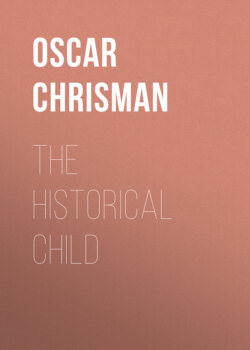Читать книгу The Historical Child - Oscar Chrisman - Страница 41
На сайте Литреса книга снята с продажи.
Food and Drink.
ОглавлениеTable of Contents
Beef and goose constituted the principal part of the animal food throughout Egypt, yet the cow was held sacred and forbidden to be eaten.32 Among the animals used for food were the ox, kid, wild goat, and gazelle. Of fowls there were the goose and duck, the widgeon and quail and other wild birds. There were fish in plenty. They had a variety and abundance of vegetables, among them being onions, garlic, lentils, beans, cucumbers, and melons. The lotus, papyrus, and other plants that grew abundantly along the Nile furnished the greatest food for the poorer people. Among the grains they had wheat, barley, and durra. Of the fruits were dates, figs, pomegranates, olives, almonds, peaches, and grapes.
For grinding the grain they had a mill of two circular stones, the lower one fixed and the upper one arranged to turn on a pivot. The grinding was done by a woman turning the upper stone by a handle, the grain being poured through an opening in the center of the upper stone so as to get between the stones to be crushed and ground. The same kind of a mill was made on a larger scale and turned by animals. The better classes used bread made from wheat while the poorer people used cakes of barley or durra flour.
Dinner probably came at midday and supper in the evening. It would seem that they washed before the meal as well as after partaking of it. A napkin was presented to each person for wiping the mouth after drinking. It was their custom to sit together about a table at their meals, as we do now. Men and women sat together, although sometimes the sexes were entertained separately in a different part of the room, on which occasion the master and the mistress of the house sat close together on two chairs or on a double chair at the upper end of the room. Water, cooled in porous bottles, or wine was served to the guests. Knives were used for the carving of a large joint and spoons were provided the guests, for soups and other liquids, but they did not have knives or forks, so they ate with their fingers, each one dipping his bread into a dish placed in their midst, one after another according to rank as guests.
"The Egyptians, a scrupulously religious people, were never remiss in expressing their gratitude for the blessings they enjoyed, and in returning thanks to the gods for that peculiar protection they were thought to extend to them and to their country, above all nations of the earth. They therefore never sat down to meals without saying grace; and Josephus says that when the seventy-two elders were invited by Ptolemy Philadelphus to sup at the palace, Nicanor requested Eleazer to say grace for his countrymen, instead of those Egyptians, to whom that duty was committed on other occasions."33
"It was a custom of the Egyptians, during (or according to Herodotus after) their repasts, to introduce a wooden image of Osiris, from one foot and a half to three feet in height, in the form of a human mummy, standing erect, as Plutarch informs us, in a case, or lying on a bier, and to show it to each of the guests, warning him of his mortality, and of the transitory nature of human pleasures. He was reminded that some day he would be like that figure; that men ought 'to love one another, and avoid those evils which tend to make them consider life too long, when in reality it is too short'; and while enjoying the blessings of this world, to bear in mind that their existence was precarious, and that death, which all ought to be prepared to meet, must eventually close their earthly career."34
Wine was their favorite beverage and they had several different kinds of it. They indulged in it very freely and there were no restrictions on its use by individuals. It was used by all classes of the people, by the priests, furnished to soldiers, offered to the gods, and prescribed as medicine. Women, both young and old, were permitted to have wine, and it would appear as if there were no restrictions as to their use of it.
The Egyptians also had beer, which was made from barley, and as they did not grow hops they used lupins, skirret, and an Assyrian root for flavoring it.35 "Besides beer, the Egyptians had what Pliny calls factitious, or artificial, wine, extracted from various fruits, as figs, myxas, pomegranates, as well as herbs, some of which were selected for their medicinal properties."36
There were excesses in drinking committed by people of all classes, both men and women. At the banquets of the rich stimulants were sometimes used to excite to further drinking, the cabbage having been one of the vegetables used for such purpose.
